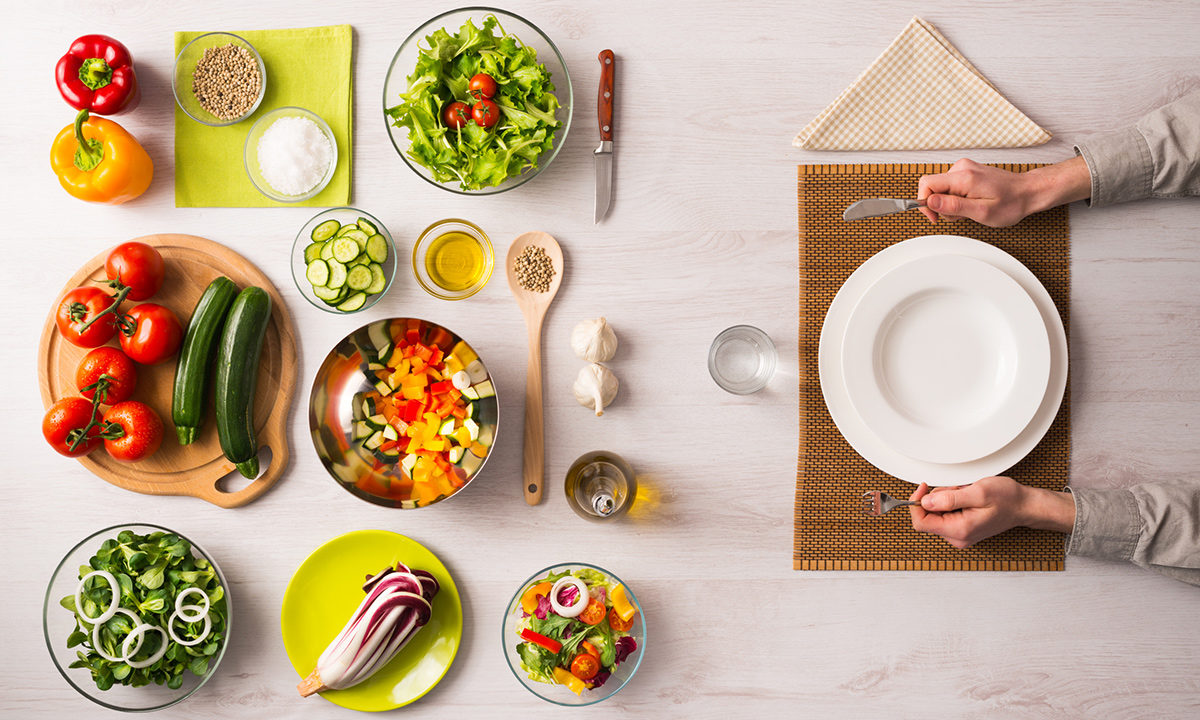By Kara Sherrer
It’s an age-old question: Is it healthier to focus on the type of food you eat or the portion size?
Whatever the correct answer is, consumers tend to be more influenced by the perceived healthiness of a food (nuts over chocolate, for example), than a food’s portion size. That’s one of the findings in new research by Kelly Haws, professor of marketing at Vanderbilt University’s Owen Graduate School of Management.

Professor Kelly Haws
The study, to be published in the journal Management Science, also finds that this tendency to neglect food quantity in favor of food type can partly be mitigated by encouraging consumers to compare different portion sizes of food side-by-side.
Consumers believe the type of food they are eating has a much greater impact on their ability to achieve health goals than the amount of food they consume. As a result, even consumers who are trying to lose or maintain their current weight choose “healthy” items in larger amounts than the food’s calories justify.
“Consumers view a change in food type as having a much greater impact on perceived healthiness or progress towards health goals than a change in food quantity, even when holding objective impact constant in terms of calories,” the authors wrote in the study.
Through a series of lab and online studies, Haws and her co-authors (Peggy J. Liu of the University of Pittsburgh; Joseph P. Redden of the University of Minnesota; and Karen Scherr, James R. Bettman, and Gavan J. Fitzsimons of Duke University) investigated the effects of varying food types (such as chocolates vs. almonds vs. crackers) and varying food quantities (such as 1⁄2 serving vs. 1 serving vs. 2 servings) on participants’ healthiness perceptions.
In the studies, food type emerged as a “primary dimension,” or a factor that was highly relevant and influential to participants’ judgments of the food’s healthiness. Meanwhile, food quantity acted as a “secondary dimension,” holding much less sway over participants’ healthiness evaluations unless portion size was explicitly brought to their attention. And even then, food quantity affected judgments less than the primary dimension of food type.
Past research has generally examined food type and quantity separately or treated them as interchangeable routes to healthier consumption. “These findings are innovative because they distinguish between and explicitly compare two common routes to healthier consumption that are perceived to be very different,” the authors wrote.
Haws’ findings have implications not just for researchers, but for everyday consumers looking to make healthier food choices or manage their weight. Eating a smaller number of calories is key to losing weight, but if individuals consume large quantities of foods that are high in calories but perceived to be healthy (such as nuts), they may actually consume more calories than they would by eating a smaller portion of junk food.
“The tendency to be largely insensitive to food quantities may be problematic if consumers believe that consuming large portions of calorically-dense ‘healthy’ foods (e.g., granola, nuts) will have a similar impact on health as consuming smaller portions of such foods,” the authors noted.
“These findings suggest that the primacy of type over quantity could potentially have a negative impact on efforts to lose or maintain weight through reduced caloric consumption.”
Want to learn more about Marketing at Vanderbilt Business? Visit our MBA program page or our Master of Marketing program page.
